The Kitchen Table is a 19 seat space at Bubbledogs, whose bar serves the unusual combination of champagne and hot dogs; Bubbledogs opened in August 2012. The kitchen table is the fine dining counterpart to the bar, where chef James Knappet serves a no-choice tasting menu in two evening sittings. The format bears more than a passing resemblance to Brooklyn Fare, though without the aggressive attitude to customers exhibited by the latter. It even has the same single word descriptions for its dishes as Brooklyn Fare. James was head chef of Marcus Wareing at The Berkeley, after working for four years at Per Se and Noma.
The front of the restaurant is a bar area where hotdogs and champagne is served; this was packed. At the back of the bar a curtain leads to the kitchen table, where stools surround a central kitchen area, the chefs working just in front of the customers, rather as in a restaurant in Japan. The menu is also “omakase” i.e. there is one menu that all the diners eat, based on the ingredients that the chef favours that day; there is no à la carte. The tasting menu is priced at £68 per person. It appears as a series of one-liners: “mackerel, scallop” etc in the style of wd50, which is scarcely illuminating for the diner.
The wine list had round 100 selections, with a third of the list devoted to champagne. The bottles ranged in price from £32 to £199, with a median price of £59 a bottle, and an average mark-up level of around 2.6 times the retail price, which is very fair for central London. Example wines included Reiner Wess Gruner Veltliner Wachau 2011 at £35 for a wine that you can find in a shop for about £11, Marcel Deiss, Riesling 2006 at £60 for a wine that retails at around £19, and Ramonet, 1er Cru Boudriotte, Chassagne Montrachet 2008 at £149 for a wine that will set you back about £59 in the high street. A bargain was Jacques Selosse Initial Brut at £99, which is pretty much its retail price. Indeed this was such a bargain that it had sold out when I tried to order it
The meal began with raw shrimps (from Cornwall) with elderflower cordial and rosehip. The shrimps were palpably fresh but the elderflower, a strong flavour, was the dominant taste (14/20). Next came fried pig ear with a radiccio salad, anchovy and an elderflower dressing. The pork had good flavour, the salad a welcome foil to its richness, though I am not sure why yet more elderflower was used for the dressing (15/20). This was followed by raw mackerel with an oyster foam, lemon and horseradish served on a cabbage leaf. The mackerel was fine, but the sauce rather dominated the dish, and there was a touch too much lemon to my taste (14/20).
A single cooked scallop was served with turnip, mayonnaise, seaweed and sesame seeds with a little dried bonito (a predatory fish resembling tuna in taste). This was a more successful dish for me, the scallop sweet and lightly cooked, the garnishes a good balance to this sweetness but not being too strong (16/20). Next was a lobster dumpling in consommé with pickled vegetables including sea purslane. The consommé itself was clear and tasted great, showing the chef’s classical training. The lobster flavour itself was rather subdued in all this (15/20).
Duck heart is a fashionable ingredient in London right now, and appeared with figs, burnt cream, watercress, black pepper and chestnuts. The duck hearts were fine and the figs themselves were good, but for me there was not enough acidity in the dish to cut through the richness of the duck (14/20). Venison (roebuck) was the main savoury course, and was very good indeed; served with Brussels sprout leaves and a Brussels sprout coleslaw with pearl barley and a jus made from the stock of the deer. It is nice to see Brussels sprouts used outside of the Christmas season, and they worked well here, the jus rich and delicious, the venison carefully cooked (16/20).
The “cheese course” was burrata (an Italian cheese made from Mozzarella and cream) with raw parasol mushroom, truffle sauce, chickweed and sheep sorrel (also called by the more descriptive name of sour grass). This was pleasant enough, and there was a distinct aroma of truffle about the dish (14/20). Rhubarb jam with an egg sabayon and yoghurt ice cream was a reasonable idea as a dish, but was too sweet, even the rhubarb not being sharp enough to cut through the sweetness (13/20). Carrot cake with cream cheese with liquorice powder didn’t really work for me; carrot in desserts is fine, as in the excellent Indian dessert halwa, but the liquorice here overwhelmed the carrot, though the texture of the dish was fine (barely 13/20).
Service, led by Sandia Chang, previously manager at Roganic (and the chef’s wife) was friendly and capable. The bill came to £140 a head, but that involved a somewhat excessive amount of good champagne. With a modest bottle of wine it would be possible to eat here for around £95 a head. Overall, this was a very pleasant experience, though as a general theme I would say that the garnishes tended to dominate the notionally core ingredient in several courses. Presentation was good, ingredient quality reasonable though not dazzling, and the technical execution was hard to fault. Not all the flavour combinations worked equally well, which is to be expected across a long meal, with the weak point for me being the desserts. However this is early days, the menu is changing rapidly and doubtless will develop further and settle down to a more assured state in time; it is already good.
In case you were wondering, I did also try a hotdog in the packed bar afterwards. It was very pleasant; a variety of styles are on offer and are proving very popular indeed. There was a queue at the door when I arrived and a queue at the door when I left. There are no reservations for the bar, but naturally they are essential for the kitchen table.

Kitchen Table
70 Charlotte Street, London, England, W1T 4QG, United Kingdom
- Map
- 020 7637 7770
- Restaurant website
- Trade reservation
-
 outside
outside

-
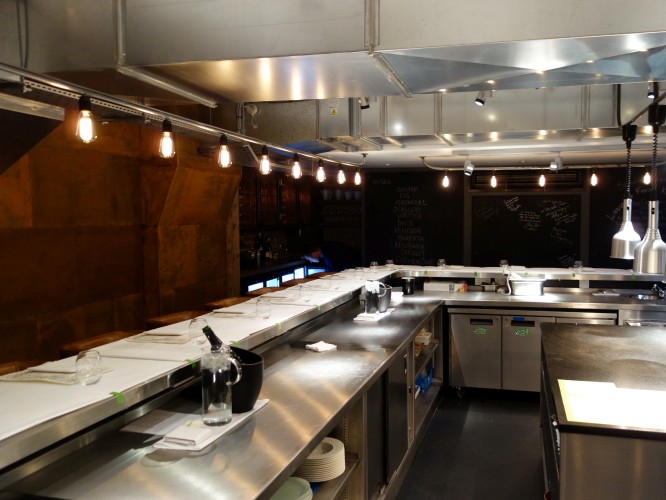 kitchen
kitchen

-
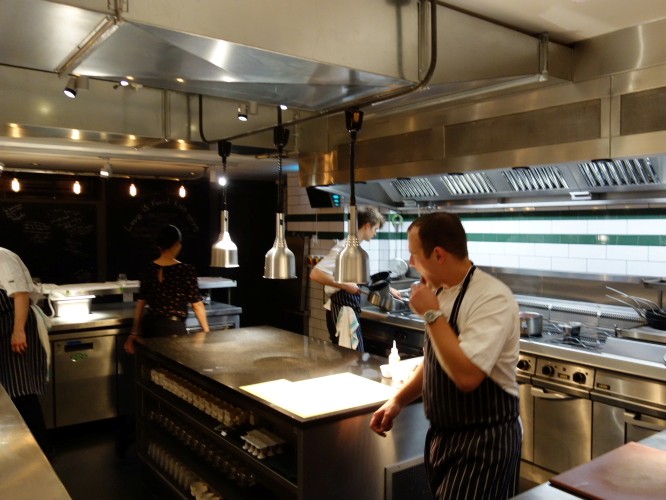 chefs
chefs

-
 shrimp
shrimp

-
 pig ear
pig ear

-
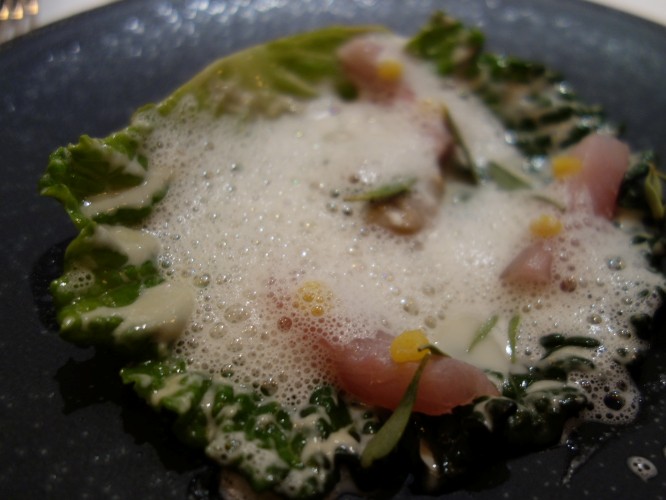 mackerel
mackerel

-
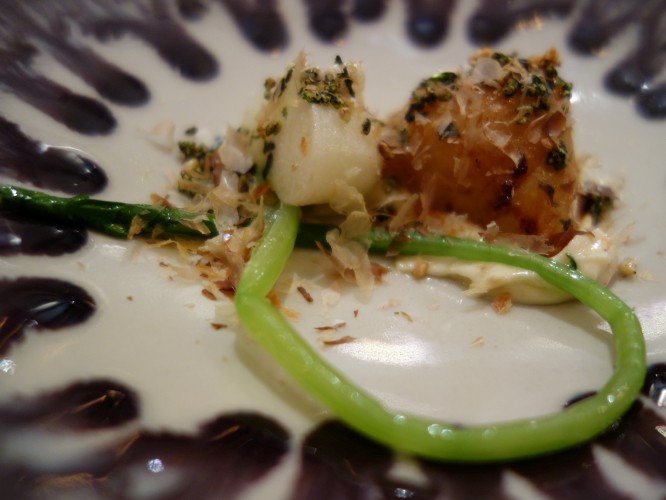 scallop
scallop

-
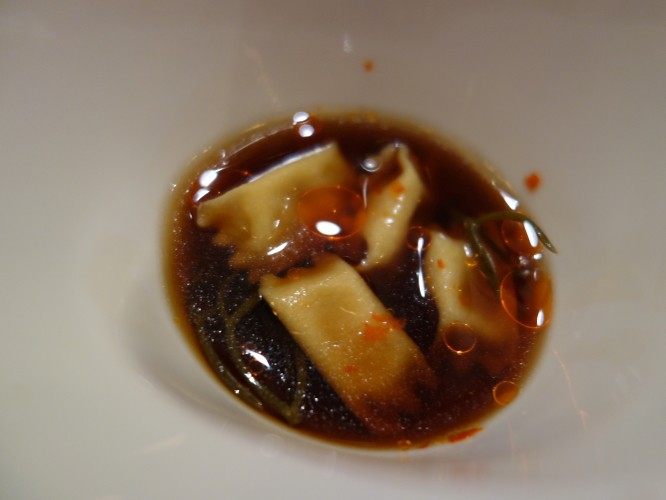 lobster
lobster

-
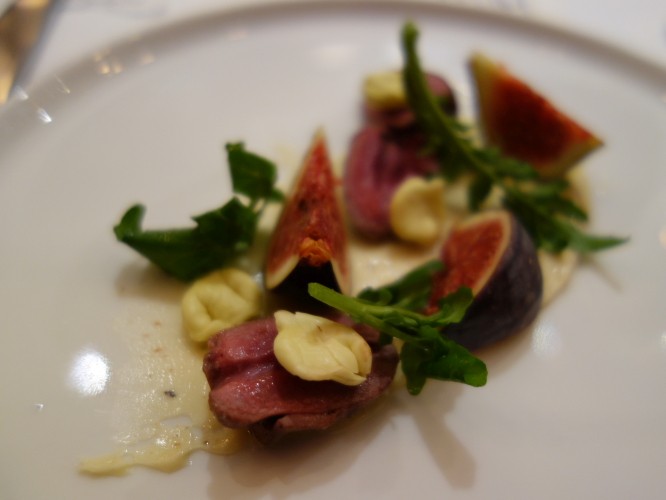 duck heart
duck heart

-
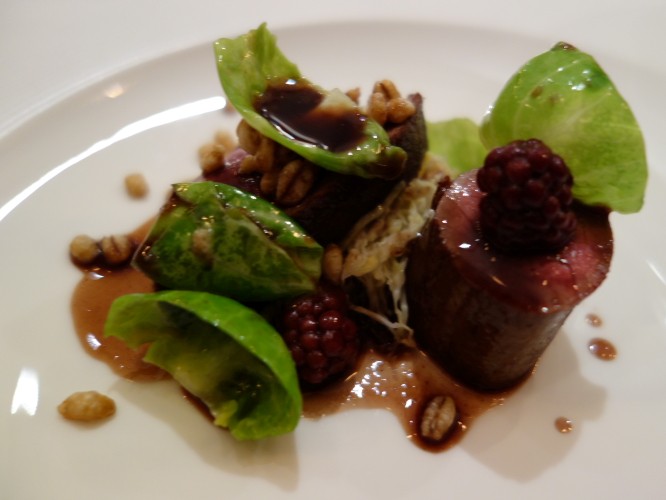 venison
venison

-
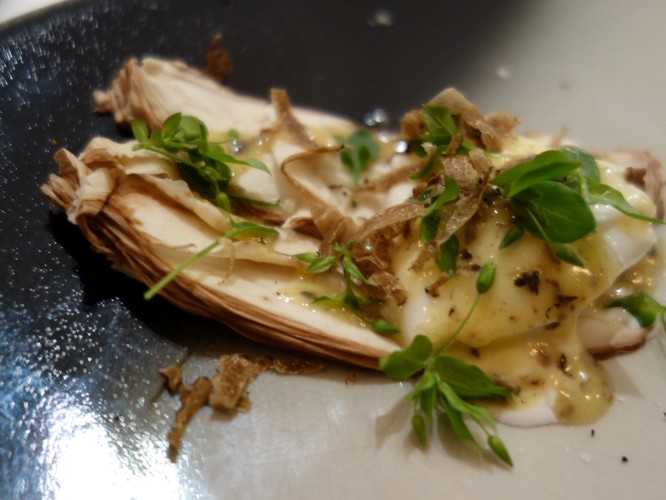 burrata
burrata

-
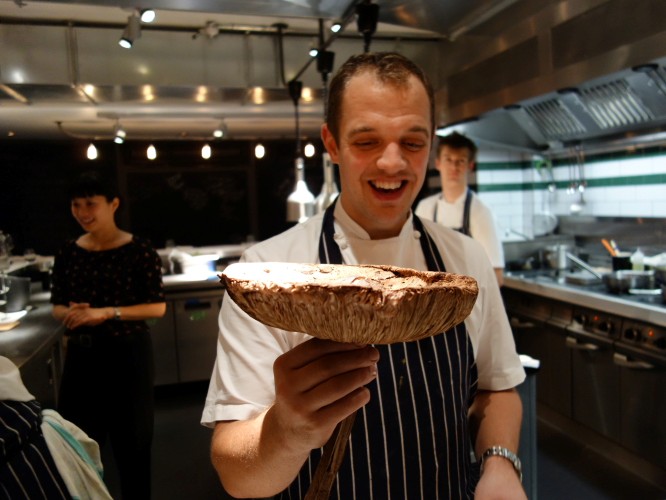 mushroom
mushroom

-
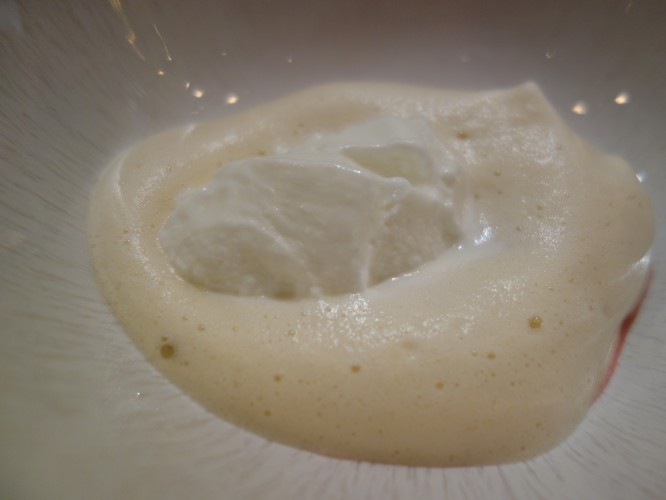 rhubarb
rhubarb

-
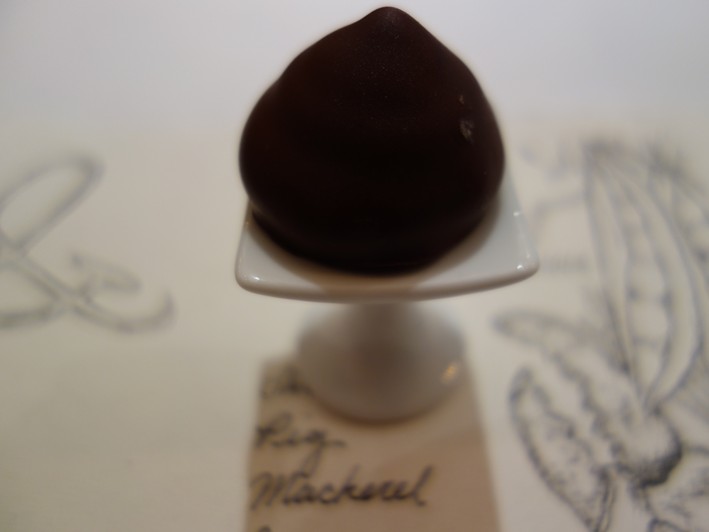 chocolate
chocolate

-
 chef at work
chef at work

-
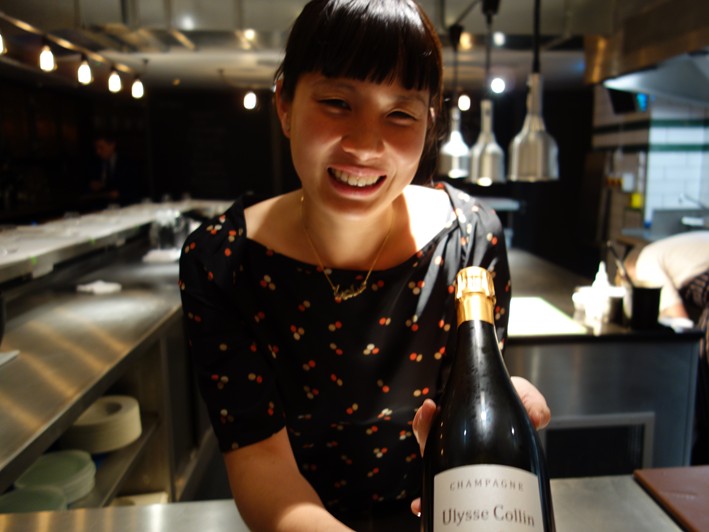 Sandia Chang
Sandia Chang

British cuisine
 Average Price £95
Price I paid £140
Value for money
££££££
Overall rating 15/20
Michelin star
Average Price £95
Price I paid £140
Value for money
££££££
Overall rating 15/20
Michelin star

The type of cuisine served at this restaurant
Typical price for three courses and modest wine
What I actually paid on this particular visit
Calculated from overall rating/average price: £££££ is best, £ least good
Score for the food from 1 to 20, with 20 being world class
Currently has at least one Michelin star

















Add a comment
Thank you for submitting your comment, this will be checked and added to the website very soon.
User comments